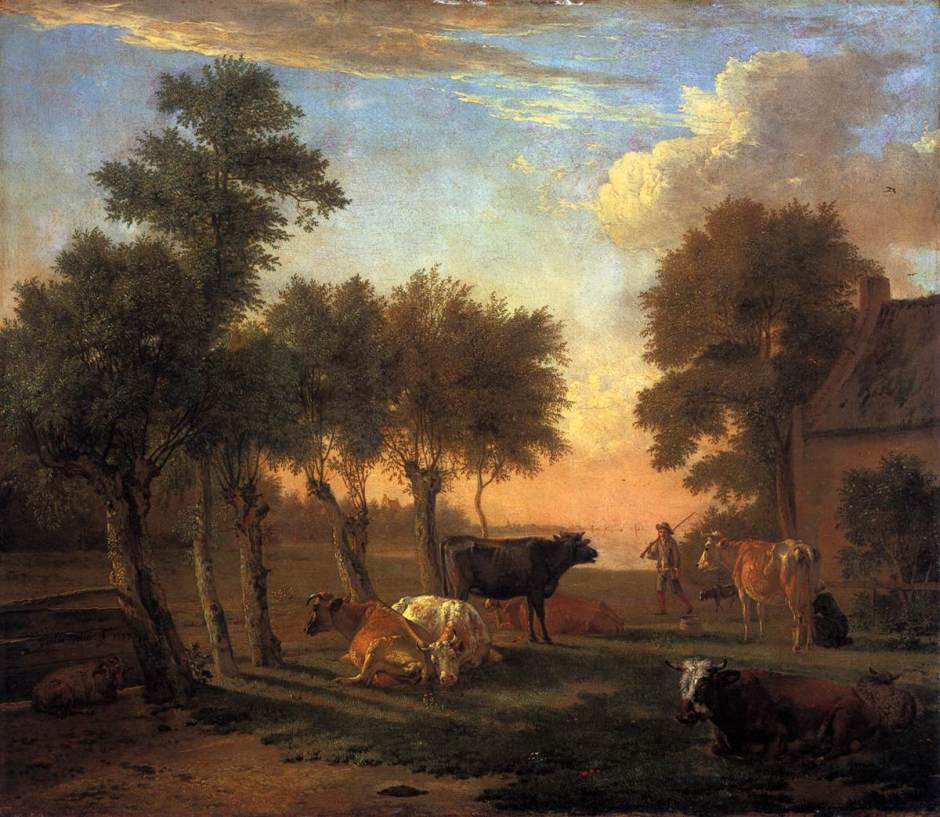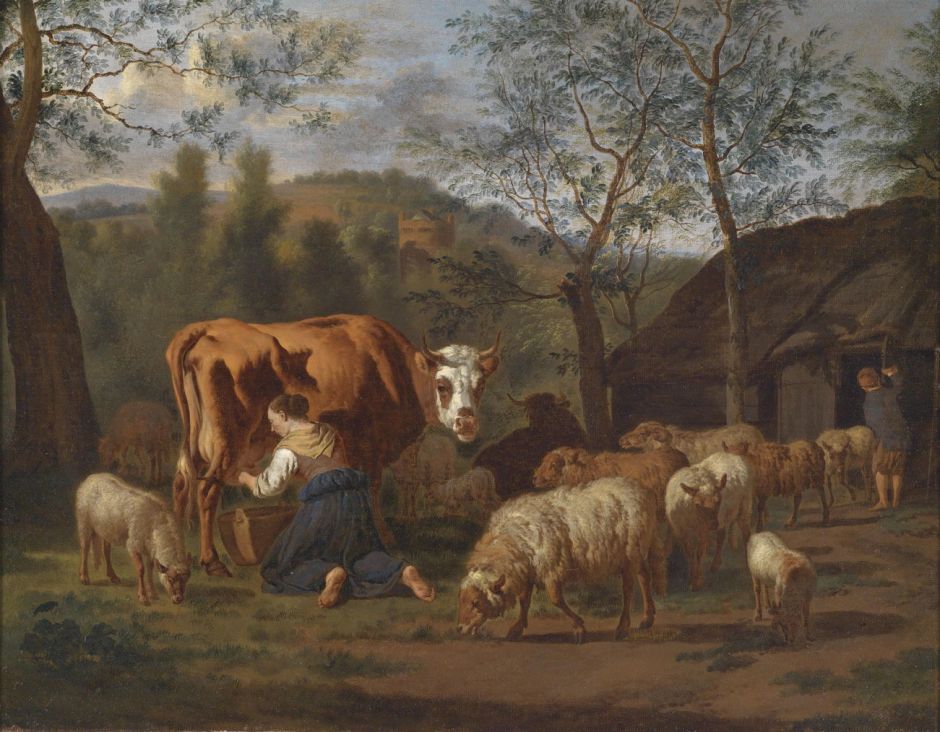The Real Country: 10 Cattle
Modern domestic cattle originated during the Stone Age from the aurochs, in the Fertile Crescent. Although they remained in Europe until they became extinct in the seventeenth century, aurochs were never domesticated, and few farmers would have known of their existence.
Cattle go under a bewildering variety of English names: cows are females, usually kept for their milk; an ox, plural oxen, can be a generic term for both males and females, or applied more strictly to castrated males commonly used for drawing carts and ploughs; bulls are males used for breeding; steers are young males, often castrated and reared for their meat; finally, bullocks were originally young males, but are now assumed to have been castrated.
Cattle have been bred and raised as draught animals, often seeing wider use than horses, particularly when power is required rather than speed, for their meat, milk and hide. As herbivores, their dung also makes good fertiliser.

One of Paulus Potter’s last paintings, Cows Grazing at a Farm from 1653, shows half a dozen cattle, typical for many small farms of the time, including those primarily working a sheep-corn system for cereal production.

Just as sheep were associated more with arable farming, cattle were often grazed on land unsuitable for crops, including open woodlands, as shown in Rosa Bonheur’s A Herdsman with his Flock from 1852. In some areas, particularly before the enclosures of the eighteenth century and later, these small herds grazed on common land that was shared by locals or all-comers.
Until the advent of the milking machine in the early twentieth century, milking of all domestic animals used as sources of milk could only be performed by hand, wherever the animals might be. Most cows were milked where they were grazing, and for much of the year that required the milkmaid (this being almost exclusively the task of women) to start work in the fields at first light.

Adriaen van de Velde’s undated Milkmaid with Cow and Goats in Front of a Barn is a farmyard delight, with the cow being milked looking directly at the viewer.

Jean-François Millet’s Woman Milking a Cow (1854-60) shows one of this secret army of milkmaids working on location as usual.

Alfred Roll’s full length portrait of Manda Lamétrie, Farmer from 1887 is a Naturalist depiction of a working woman farmer who has just milked the cow behind her. Although she’s far too clean and tidy, it’s of historical interest in that her pail is modern and manufactured from metal.
In the harsher winters of northern Europe, cattle were usually brought in to shelter from the worst of the weather, which would otherwise reduce the milk yield of cows. This allowed the milkmaid to share their shelter.

Gerard ter Borch put the milkmaid and her cow at the centre of this painting, A Maid Milking a Cow in a Barn from about 1652-54. As was universal at that time, milk was collected in a wooden bucket that would have been scrubbed thoroughly before use, but fell far short of modern standards of hygiene.
Cow’s milk wasn’t bottled until the end of the nineteenth century, when processing such as pasteurisation was also introduced. Until then, milk sold in towns and cities often came fresh from the cow.

George Morland’s painting of St. James’s Park from 1788-90 shows a military family together in what’s now a central London park, but was at that time still quite rural, with a cow being milked at the left. This appears to have been a common sight until well into the nineteenth century.
Milk was also transformed into foods such as cheese, as a means of preserving its nutritional value long after the milk would have become sour and inedible. Small-scale cheese production has been widespread throughout the world since long before historical records began. Processing methods have been varied, resulting in innumerable local varieties of cheese that are distinctive of their areas of origin. Milk has also been processed into curds, butter, cream and yogurt.
One great benefit of milking cows was exposure to cowpox, a mild viral illness that provided immunity against its mutilating and often deadly relative smallpox. In 1796, the British physician Edward Jenner made the association between the two diseases, leading to the introduction of vaccination using cowpox virus, and the eventual eradication of smallpox in 1980, long after the eradication of the milkmaids who had made it all possible.

Constant Troyon’s Oxen Going to Work from 1855 shows teams of oxen being driven off to be hitched up to carts or ploughs in draught.
From the end of the Middle Ages, farms started to specialise in breeding cattle for their meat. Across Europe, tracks and later roads developed for crews of itinerant drovers to drive herds to market, where they were sold for slaughter, to yield beef, and their hides were processed into leather.

Sidney Richard Percy’s On the Road to Loch Turret, Crieff (1868) shows a few cattle watering close to this drover’s road near the market town of Crieff in Scotland. Cattle were driven here from rough grazing to the north, and some were sold in Crieff to be driven south through England to the pastures of Norfolk, where they were fattened before walking onward to London, to become roast beef for diners there. Few Londoners would have realised how many hundreds of miles their dinner had walked to reach its plate.
Next week I’ll look at the second favourite food of cattle, hay.








